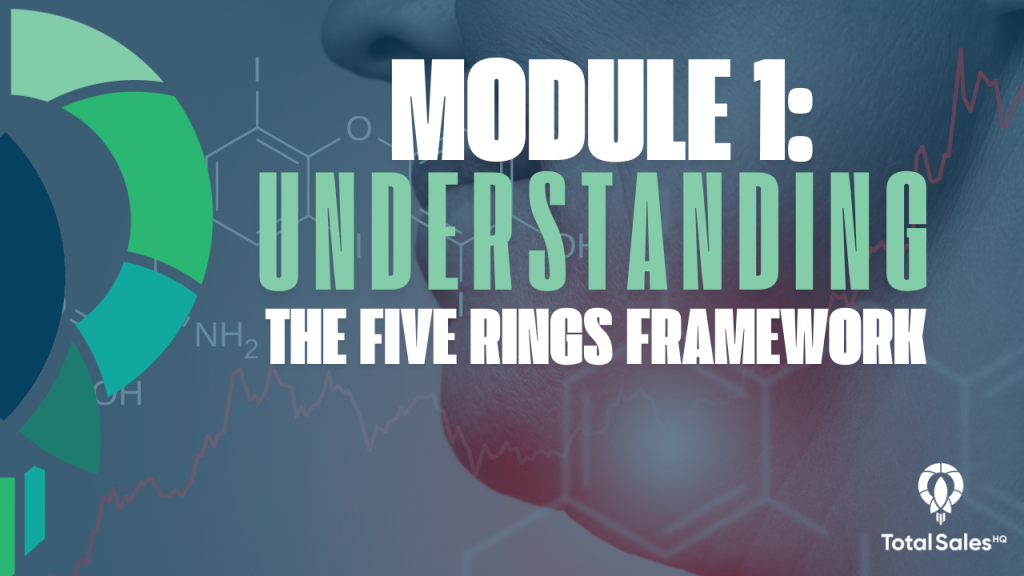Overview:
The Five Rings Framework is designed to help new Fractional Sales Directors (FSDs) strategically prioritize their initial conversations. This module explains:
- What the Five Rings Are
- How They Help You Build Success
- Why the Five Rings Are Critical to Launching Your Fractional Sales Agency
Section 1: What Are the Five Rings?
The Five Rings Framework organizes your network and potential contacts into manageable categories for outreach. Each ring represents a different level of familiarity and trust, helping you approach conversations with purpose and focus.
- Ring 1: Existing Clients
These are your current customers who already trust your work and understand your value.
- Ring 2: Previous Clients
Former customers who may still hold you in high regard.
- Ring 3: Professional Network
Colleagues, industry peers, and acquaintances who value your expertise.
- Ring 4: Databases, Unconverted Leads, Social Networks
Contacts you’ve engaged with in the past, such as email lists, old leads, or LinkedIn connections.
- Ring 5: New Leads and Contacts
Fresh opportunities from outreach efforts or introductions.
Section 2: Building Your Initial List of Contacts (50 Minimum)
Before you start ranking your contacts, you need to establish a solid list of people to talk to. Use your CRM’s Five Rings Pipeline to map out a list of at least 50 contacts, ensuring that they fall into the categories above. These should be people you’ve interacted with or who are relevant to your outreach.
Why This Step is Critical
- Foundation for Outreach: Having a list of at least 50 people ensures you’re not starting from scratch. This list will be your first source of leads.
- Better Rankings: Once you’ve identified your 50 contacts, ranking them will become a more accurate and meaningful process, as you’ll have a clearer sense of who’s more likely to become a client.
- Consistency in Activity: With 50 contacts in hand, you have a tangible target to work towards, keeping you consistent with your outreach.
Activity: Build Your 50-Person List
- Review each ring in your CRM and extract potential contacts from each.
- Identify 50 people to reach out to, ensuring they come from different rings to help diversify your outreach and practice.
- Add them to your Five Rings Pipeline, categorized by ring and stored in your CRM for easy access.
Section 3: Ranking Your Contacts (1-5 Scale)
Now that you’ve built your list of 50 contacts, it’s time to rank them based on their likelihood of becoming a client.
- Ranking System (1-5):
- 1 = Least Likely: People who you think are unlikely to become a client at the moment.
- 5 = Most Likely: People who are highly engaged, may need your services now, or have shown clear interest.
- Focus on Ranking: This ranking will guide your outreach, ensuring you’re starting with the least risky contacts and building confidence before engaging with higher-stake conversations.
Section 4: Activity Plan – Committing to 10 Conversations per Week
Now that you’ve ranked your contacts, commit to having 10 conversations per week. This will give you a measurable target to stay consistent and build momentum.
Start with contacts who are LEAST Likely to convert into clients and as your confidence, messaging and positioning improves move towards those who are more likely to convert.
Why 10 Conversations a Week?
- Builds Confidence: Regular conversations reduce hesitation and improve your messaging.
- Gives You Market Insights: You’ll gain a better understanding of your audience’s needs, objections, and challenges.
- Fosters Momentum: Every conversation gets you closer to new leads, referrals, and ultimately, clients.
Activity: Set Your Weekly Goal
- Commit to having 10 conversations each week, starting with those ranked in the 1-2 range.
- Track your progress and make adjustments to your approach as needed.
Section 5: Using Feedback to Refine Your Offer, Pitch, and Sales Process
Feedback is critical in refining your sales process and pitch. After each conversation, review what went well and where you can improve.
- What Feedback to Look For:
- How does your message resonate?
- Are there objections that come up repeatedly?
- How can you refine your value proposition based on market feedback?
Activity: Review Your Conversations
- After every 5 conversations, take a step back and evaluate:
- What trends have emerged?
- How can you improve your pitch?
- What adjustments can you make to better connect with prospects?
Section 6: Generating New Leads
As you progress through the Five Rings, you’ll start to approach Ring 5 – New Leads and Contacts. By this point, your offer and pitch will have been refined based on the feedback from your previous conversations.
Why Ring 5 is Key:
- This is where you’ll start to scale your outreach efforts.
- Because you’ve already tested and refined your messaging in the earlier rings, you’ll be able to approach new leads with confidence and a more compelling offer.
Activity: Map New Leads to Ring 5
- As you engage in conversations and gather new leads, place them in Ring 5.
- Continue to use your CRM to track these contacts and convert them into qualified prospects.
Summary and Next Steps
By completing this module, you will:
- Have built a foundational list of at least 50 contacts from your network.
- Understand how to rank and prioritize these contacts for meaningful outreach.
- Be ready to commit to 10 conversations per week and refine your sales process based on feedback.
- Move forward with generating new leads and scaling your outreach efforts effectively.
Next Module: Creating Your Five Rings Call Script

